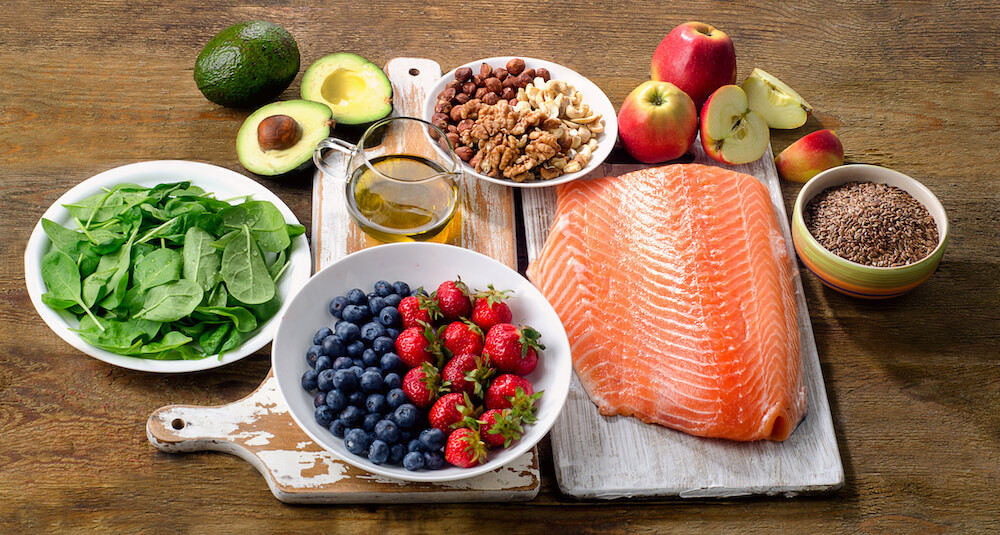In your everyday struggle against pain and inflammation, do you reach for a pill bottle, or do you seek healthy lifestyle changes? The latter choice will do more for you in terms of long-term function, mobility and safety. But what kinds of lifestyle changes should you pursue? In addition to regular exercise, including the types of targeted exercises you might receive in physical therapy, you should examine your sleep, your workplace ergonomics — and your nutrition. Here are five ways that the proper nutritional strategies can help you control pain and inflammation for life.
1. Certain Foods are Natural Anti-inflammatories
Why get your anti-inflammatory effects from an NSAID or steroid when you can get them from the foods you eat every day? Many of the menu items in the traditional Mediterranean diet, for instance, posses natural anti-inflammatory properties. Foods such as whole grains, fatty fish, olive oil, turmeric, cherries, and cayenne pepper can reduce inflammation and the pain that comes with it. At the same time, you’ll be eating fewer inflammatory foods such as red meat, fried foods and processed meats, turning the pain management scales decidedly in your favor.
2. Nutrition Can Help Regulate Your Immune System
When your immune system malfunctions, pain often results. Autoimmune disorders are responsible for such painful chronic conditions as rheumatoid arthritis. Eating foods rich in omega-3 fatty acids, zinc, selenium, probiotics, and vitamins A and D can help you avoid or control autoimmune diseases, thus helping you enjoy greater comfort and a higher standard of overall wellness.
3. Eating Right Can Help You Lose (Painful) Weight
Obesity has been associated with all kinds of problems, from heart diseases and type 2 diabetes to liver disease and certain kinds of cancer. But did you know that obesity also hurts? Those added pounds can put a lot of stress on your joints and muscles, especially in the back, hips, knees and feet, where they can contribute to osteoarthritis development. If the rising number on the scale corresponds to rising pain levels, the right dietary changes can turn things around. Focus on foods that are rich in nutrients, low in fat and sugar, and served in sensible portion sizes. You’ll shed pain as you shed pounds!
4. Proteins Build Muscle for Better Physical Support
Weak muscles are more vulnerable to injury, pain and inflammation; they also allow your posture to sag, throwing your weight off-balance, subjecting your entire musculoskeletal system to unnecessary discomfort. Physical therapy exercises can help, but your muscles still need the basic building material known as protein. Getting plenty of lean, healthy proteins (from foods that are relatively low on the inflammation scale) can help you build a body that resists pain and injury.
5. A Healthier Gut Means Less Inflammation
Your gut flora have a lot of influence on your overall health and comfort. Eating whole grains, lentils, avocado, low-fat yogurt and other probiotic foods can help you maintain high levels of “good bacteria” in your gut. This positive balance can help reduce inflammation throughout the body.
Our Physical Therapist Can Help You Eat for Pain Relief
Our physical therapist has a detailed understanding of how nutrition (both good and bad) affects physical health, wellness and comfort. If you’ve been dealing with chronic pain and inflammation, pay a visit to our physical therapy center. We can evaluate your situation and recommend the necessary changes to get you feeling better!

